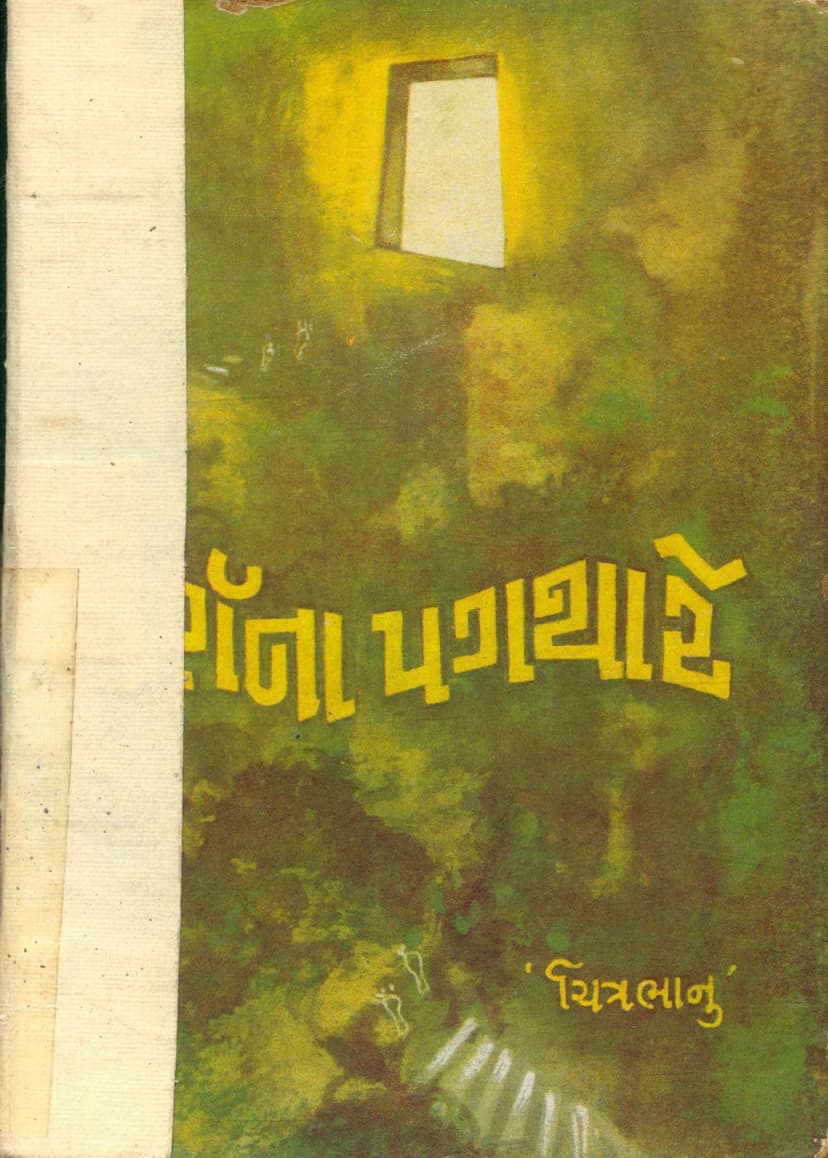Purnna Pagthare
Added to library: September 2, 2025

Summary
Here's a comprehensive summary of the Jain text "Purnna Pagthare" by Chitrabhanu, based on the provided pages:
Book Title: Purnna Pagthare (On the Steps to Wholeness/Perfection) Author: Chitrabhanu (as Pujya Munishri Chandraprabhsagarji Maharaj) Publisher: Divyagyan Sangh, Mumbai
Overall Theme: The book is a collection of discourses (Pravachanas) by Munishri Chandrabh Sagarji Maharaj, focusing on achieving spiritual completeness and understanding the true nature of the self. It emphasizes inner development, self-realization, and living a life aligned with Jain principles.
Key Concepts and Themes Explored:
- The Nature of the Self (Atmashri): The core message revolves around recognizing and experiencing the soul's inherent completeness and bliss (Atmashri). This spiritual wealth is an inheritance, but ignorance (swarup-vismaran) of this truth leads to worldly desires and suffering. The analogy of a wealthy heir begging for chocolates highlights this self-forgetfulness.
- Perfection and Wholeness: The book explores the concept of perfection not as an external acquisition but as an inherent quality of the soul. External possessions, status, or power are transient and do not lead to true, lasting fulfillment.
- The Power of Silence and Inner Experience: Munishri emphasizes that true silence (Maun) is not the absence of speech but an experience of the soul's inner music and rhythm, leading to bliss (Anand). This inner dialogue is crucial for self-discovery.
- The Illusion of External Attachment: The discourses strongly caution against attachment to worldly possessions, status, and sensory pleasures. These are likened to temporary comforts or borrowed ornaments that ultimately lead to suffering and dependence. The analogy of a shoe polish boy serving a manager or a millionaire highlights that respect and attention are often directed towards external factors, not inherent worth.
- Understanding Karma and its Consequences: The text explains that the cycle of birth and death and the experiences of happiness and sorrow are governed by karma. Actions performed with attachment (mamata) and desire lead to further karmic bondage.
- The Four Types of Beings (Maakhi Analogy): The discourses use the analogy of four types of flies to categorize beings based on their relationship with worldly pleasures and freedom:
- Fly on Sugar: Enjoys worldly pleasures but maintains independence and can fly away. (Represents detachment amidst enjoyment).
- Fly on Stone: Has no taste but is completely free. (Represents detachment without enjoyment).
- Fly on Honey: Enjoys the sweetness but gets stuck and cannot escape. (Represents attachment leading to bondage).
- Fly in Feces: Neither tastes nor has freedom. (Represents extreme suffering and ignorance).
- The True Nature of Happiness: True happiness (Anand) is presented as an internal state, derived from self-awareness and detachment. It is not dependent on external circumstances or possessions.
- The Importance of Self-Awareness and Self-Knowledge: The path to completeness lies in understanding "Who am I?" and recognizing the soul's eternal, unchanging nature. This journey is an inward one, requiring introspection and study of the self.
- The Role of Renunciation and Detachment: The teachings highlight the necessity of renouncing desires and attachments to achieve spiritual progress. Lord Mahavir's life is presented as an example of leaving behind worldly comforts for the sake of truth and universal welfare.
- Lord Mahavir's Teachings: Several discourses are dedicated to Lord Mahavir, emphasizing his principles of non-violence (Ahimsa), non-attachment (Aparigraha), multi-faceted truth (Anekantavada), and karma theory. His birth anniversary is seen as an occasion for introspection and understanding his philosophy. The discourses highlight Mahavir's transformation from a prince to an ascetic and his compassion for all living beings.
- The Concept of 'Purnna' (Wholeness/Perfection): The book systematically elaborates on what constitutes true perfection, distinguishing it from mere external appearances or acquired status. It is an innate quality of the soul that needs to be realized.
- The Call to Action and Inner Transformation: The discourses are not merely theoretical; they urge the listeners to actively engage in self-reflection, practice detachment, cultivate inner strength, and strive for spiritual growth. The emphasis is on living a life of purpose and contributing to the welfare of all beings.
- The Impermanence of Worldly Things: The book consistently reminds the reader of the transient nature of the body, relationships, wealth, and status, urging them not to get entangled in their ephemeral nature.
Structure and Style: The book is structured around various spiritual topics, each elaborated with analogies, stories, and philosophical explanations in a simple, clear, and impactful manner. Munishri's "maun" (silence) is interpreted not as the absence of sound but as an internal state of experiencing the soul's symphony. The language is described as sweet and capable of resonating with the heart.
In essence, "Purnna Pagthare" serves as a guide for spiritual seekers to understand their true, perfect nature and to embark on the path of self-realization through adherence to Jain principles, inner discipline, and a life of detachment and compassion.